
Minicourse
ICOPS 2021
“Plasma Spectroscopy:
The Full Spectrum from X-rays
to Radio Waves”
Chair: Dr. Mark D. Johnston (Sandia National Laboratories)
Please click this sentence to view the minicourse schedule
as a printable PDF File.
John C. Mather
2006 Nobel Prize in Physics
NASA: Goddard Space Flight Center
“Opening the Infrared Treasure Chest with the James Webb Space Telescope (JWST)”
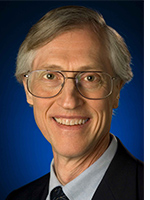 Dr. John C. Mather is a Senior Astrophysicist at NASA’s Goddard Space Flight Center in Greenbelt, Maryland, where he specializes in infrared astronomy and cosmology. He received his Bachelor’s degree in physics at Swarthmore College and his PhD in physics at the University of California at Berkeley.
Dr. John C. Mather is a Senior Astrophysicist at NASA’s Goddard Space Flight Center in Greenbelt, Maryland, where he specializes in infrared astronomy and cosmology. He received his Bachelor’s degree in physics at Swarthmore College and his PhD in physics at the University of California at Berkeley.
As an NRC postdoctoral fellow at the Goddard Institute for Space Studies (New York City), he led the proposal efforts for the Cosmic Background Explorer (74-76), and came to GSFC to be the Study Scientist (76-88), Project Scientist (88-98), and the Principal Investigator for the Far IR Absolute Spectrophotometer (FIRAS) on COBE. He and his team showed that the cosmic microwave background radiation has a blackbody spectrum within 50 parts per million, confirming the Big Bang theory to extraordinary accuracy. The COBE team also discovered the cosmic anisotropy (hot and cold spots in the background radiation), now believed to be the primordial seeds that led to the structure of the universe today. It was these findings that led to Dr. Mather receiving the Nobel Prize in 2006.
Dr. Mather now serves as Senior Project Scientist (95-present) for the James Webb Space Telescope, the successor to the great Hubble Space Telescope.
Abstract: The long-awaited James Webb Space Telescope is planned for launch by Oct. 31, 2021. With its 6.5 m deployable primary mirror, and cameras and spectrometers covering 0.6 to 28 µm, it promises extraordinary improvements in observing capabilities. Webb will be able to observe the first objects that formed after the Big Bang, the growth of galaxies, the formation of stars and planetary systems, individual exoplanets through coronography and transit spectroscopy, and all objects in the Solar System from Mars on out. It could observe a 1 cm squared bumblebee at the distance of the Moon, in reflected sunlight and thermal emission. I will review the observatory capabilities and planned observing program, and illustrate the history of the concept from 1988 to now. The Webb is a joint project of NASA with the European and Canadian space agencies.
Roger C. Wiens
Los Alamos National Laboratory
“LIBS on the Red Planet: Exploration of Another World using CHEMCAM and SUPERCAM”
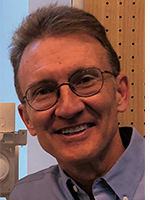 Dr. Wiens is the leader of the SuperCam laser instrument on the Perseverance rover that landed on Mars in February 2021. This instrument has the rover’s highest resolution remote imager, a microphone, and infrared and laser techniques. His team includes French, Spanish, Italian, Danish, Canadian, and US participation. He is also a co-investigator on the SHERLOC instrument on the rover’s arm. Previously, he was the leader of ChemCam on the Curiosity rover (http://mars.jpl.nasa.gov/msl/; http://www.msl-chemcam.com), which landed in 2012 and is still operating. Wiens has been involved in other NASA robotic missions as well. He was responsible for three instruments for NASA’s Genesis mission and he acted in the capacity of Flight Payload Lead. This mission was the first to return to Earth from nearly a million miles beyond the Moon, when it landed in 2004 with solar-wind samples that revealed exciting details about the composition of the Sun. Wiens’ other missions include Stardust, Mars Odyssey, Lunar Prospector, and Deep Space-One. The destinations for these missions include the Moon, Mars, and comets. Wiens has been recognized by NASA and Los Alamos National Laboratory for his contributions to science. He is a Fellow of Los Alamos National Laboratory, his home institution, and has been knighted by the French government for his collaborative work with their space agency and scientists. He is a winner of the Air and Space Academy’s Vermeil Medal and the namesake of Asteroid 41795 WIENS.
Dr. Wiens is the leader of the SuperCam laser instrument on the Perseverance rover that landed on Mars in February 2021. This instrument has the rover’s highest resolution remote imager, a microphone, and infrared and laser techniques. His team includes French, Spanish, Italian, Danish, Canadian, and US participation. He is also a co-investigator on the SHERLOC instrument on the rover’s arm. Previously, he was the leader of ChemCam on the Curiosity rover (http://mars.jpl.nasa.gov/msl/; http://www.msl-chemcam.com), which landed in 2012 and is still operating. Wiens has been involved in other NASA robotic missions as well. He was responsible for three instruments for NASA’s Genesis mission and he acted in the capacity of Flight Payload Lead. This mission was the first to return to Earth from nearly a million miles beyond the Moon, when it landed in 2004 with solar-wind samples that revealed exciting details about the composition of the Sun. Wiens’ other missions include Stardust, Mars Odyssey, Lunar Prospector, and Deep Space-One. The destinations for these missions include the Moon, Mars, and comets. Wiens has been recognized by NASA and Los Alamos National Laboratory for his contributions to science. He is a Fellow of Los Alamos National Laboratory, his home institution, and has been knighted by the French government for his collaborative work with their space agency and scientists. He is a winner of the Air and Space Academy’s Vermeil Medal and the namesake of Asteroid 41795 WIENS.
Abstract: NASA’s Mars rovers Curiosity (landed 2012) and Perseverance (landed 2021) both use laser-induced breakdown spectroscopy (LIBS) to determine the elemental composition of rocks and soils within ~7 m of the rover. SuperCam on the Perseverance rover combines LIBS with remote Raman and visible+infrared reflectance spectroscopies to characterize a previously habitable environment in Jezero crater, which was once a lake; it contains a delta formation at the mouth of an ancient river. SuperCam’s LIBS uses a microphone to record the sound intensities of the plasma, providing information on the targets’ physical properties (hardness, weathering coatings). In addition to exploring the crater’s geochemistry, SuperCam will characterize compositions around locations of samples being collected and cached for return to Earth in a decade. SuperCam’s predecessor, ChemCam, has fired nearly 1 million laser pulses on > 20,000 observation points across Curiosity’s ~25 km traverse up Mt. Sharp in Gale crater to study compositional variations of lakebed sediments that were deposited > 3 billion years ago, and to probe chemistry of groundwater from materials precipitated in fractures in the rocks. The team regularly archives [1] abundances of 8 major elements and several trace elements. Overall, the ChemCam team has calibrated and published [2] compositions for 25 elements. I will describe the instruments, their calibration, and our exploration and discoveries.
[1] https://pds-geosciences.wustl.edu/missions/msl/chemcam.htm
[2] https://www.msl-chemcam.com/results/publications/
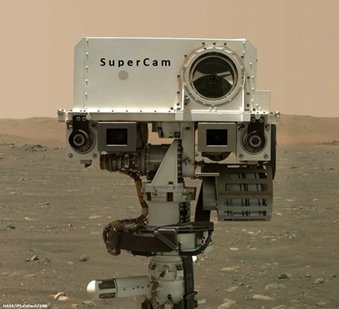
* Work supported by NASA
Yitzhak Maron
Weizmann Institute of Science
“Spectroscopic Determination of Magnetic Fields in Pulsed-Power and High Energy Density Plasmas”
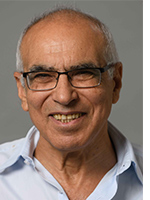 Dr. Yitzhak Maron received his Ph.D. in Physics from the Weizmann Institute of Science (WIS) in 1977, and in the years 1980-1984 became a Research Associate at the Laboratory of Plasma Studies at Cornell University. Then, as a Professor in the Faculty of Physics of the WIS, he has been heading the Plasma Laboratory there. His Laboratory focuses on experimental spectroscopic investigations of high-energy-density plasmas, together with developing kinetics, line-shape, and radiation-transport computations. In recent years, the WIS laboratory has been developing methods to distinguish between the ion temperature and the hydrodynamic motion in imploding plasmas, as well as investigating the magnetic field distribution in pulsed-power systems. The latter include experiments on Plasma Opening Switches, electron diodes, Z-pinches, and magnetized-plasma compression. Furthermore, the Laboratory pursues investigations of warm dense matter formed by the interaction of short intense laser pulses with solids. More information can be found in https://plasma-gate.weizmann.ac.il/. The Laboratory conducts broad international collaborations and hosts worldwide students and researchers. Maron is an APS Fellow (1995), an IEEE Fellow (2003), the recipient of the IEEE PSAC Award (2007), and the recipient of the American Physical Society John Dawson Award for Excellence in Plasma Physics Research (2009).
Dr. Yitzhak Maron received his Ph.D. in Physics from the Weizmann Institute of Science (WIS) in 1977, and in the years 1980-1984 became a Research Associate at the Laboratory of Plasma Studies at Cornell University. Then, as a Professor in the Faculty of Physics of the WIS, he has been heading the Plasma Laboratory there. His Laboratory focuses on experimental spectroscopic investigations of high-energy-density plasmas, together with developing kinetics, line-shape, and radiation-transport computations. In recent years, the WIS laboratory has been developing methods to distinguish between the ion temperature and the hydrodynamic motion in imploding plasmas, as well as investigating the magnetic field distribution in pulsed-power systems. The latter include experiments on Plasma Opening Switches, electron diodes, Z-pinches, and magnetized-plasma compression. Furthermore, the Laboratory pursues investigations of warm dense matter formed by the interaction of short intense laser pulses with solids. More information can be found in https://plasma-gate.weizmann.ac.il/. The Laboratory conducts broad international collaborations and hosts worldwide students and researchers. Maron is an APS Fellow (1995), an IEEE Fellow (2003), the recipient of the IEEE PSAC Award (2007), and the recipient of the American Physical Society John Dawson Award for Excellence in Plasma Physics Research (2009).
Abstract: We will review spectroscopic methods developed for determining the magnetic field in high-energy-density-plasma systems, including a method to determine magnetic fields that have arbitrary distributions of direction and amplitude. The methods encompass atomic transitions in the visible, ultraviolet, and x-ray spectral regions. We will discuss measurements of the magnetic field evolution in relatively low-density plasmas in transmission lines, demonstrating the role of the Hall Effect in the non-diffusive field penetration into the plasma, and observations of simultaneous field penetration and particle reflection. In addition, we will discuss measurements that demonstrate the diamagnetic effect of the electron flow in transmission lines, and quantify the shielding of the magnetic field by plasmas in these devices. For higher–density plasmas, we will review the determination of the time-dependent radial distribution of the field in imploding plasmas, and its utilization for studying the plasma resistivity based on the diffusion of the field, for the inference of current bounce from small radii to larger radii at stagnation, and for studying the plasma dynamics. Measurements of the three spatial components of the magnetic field in magnetized-plasma compression will be presented, together with the inference of current redistribution in the system, and the resulting plasma rotation, found to significantly affect the energy and pressure balance .We will also discuss a scheme for using x-ray spectroscopy to measure the magnetic field carried by an intense laser-light pulse.
Eugene Oks
Auburn University
“Lineshape-Based Spectroscopic Diagnostics of Astrophysical Plasmas in the Visible and Radio Ranges”
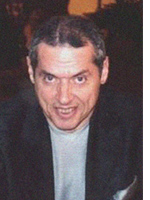 Dr. Eugene Oks received his Ph.D. degree from the Moscow Institute of Physics and Technology, and later the highest degree of Doctor of Sciences from the Institute of General Physics of the Academy of Sciences of the USSR by the decision of the Scientific Council led by the Nobel Prize winner, academician A.M. Prokhorov. According to the Statute of the Doctor of Sciences degree, this highest degree is awarded only to the most outstanding Ph.D. scientists who founded a new research field of a great interest. Oks worked in Moscow (USSR) as the head of a research unit at the Center for Studying Surfaces and Vacuum, then – at the Ruhr University in Bochum (Germany) as an invited professor, and for the last 30 years – at the Physics Department of the Auburn University (USA) in the position of Professor.
Dr. Eugene Oks received his Ph.D. degree from the Moscow Institute of Physics and Technology, and later the highest degree of Doctor of Sciences from the Institute of General Physics of the Academy of Sciences of the USSR by the decision of the Scientific Council led by the Nobel Prize winner, academician A.M. Prokhorov. According to the Statute of the Doctor of Sciences degree, this highest degree is awarded only to the most outstanding Ph.D. scientists who founded a new research field of a great interest. Oks worked in Moscow (USSR) as the head of a research unit at the Center for Studying Surfaces and Vacuum, then – at the Ruhr University in Bochum (Germany) as an invited professor, and for the last 30 years – at the Physics Department of the Auburn University (USA) in the position of Professor.
He conducted research in 5 areas: atomic and molecular physics, astrophysics, plasma physics, laser physics, and nonlinear dynamics. He founded/co-founded and developed new research fields, such as intra-Stark spectroscopy (new class of nonlinear optical phenomena in plasmas), masing without inversion (advanced schemes for generating/amplifying coherent microwave radiation), and quantum chaos (nonlinear dynamics in the microscopic world). He also developed a large number of advanced spectroscopic methods for diagnosing various laboratory and astrophysical plasmas – the methods that were then used and are used by many experimental groups around the world. He recently revealed that there are two flavors of hydrogen atoms, as proven by the analysis of atomic experiments; there is also a possible astrophysical proof – from observations of the 21 cm radio line from the early Universe. He showed that dark matter or at least a part of it can be represented by the second flavor of hydrogen atoms.
He published about 500 papers and 9 books, including the books “Plasma Spectroscopy: The Influence of Microwave and Laser Fields”, “Stark Broadening of Hydrogen and Hydrogenlike Spectral Lines in Plasmas: The Physical Insight”, “Breaking Paradigms in Atomic and Molecular Physics”, “Diagnostics of Laboratory and Astrophysical Plasmas Using Spectral Lineshapes of One-, Two, and Three-Electron Systems”, “Unexpected Similarities of the Universe with Atomic and Molecular Systems: What a Beautiful World”, “Analytical Advances in Quantum and Celestial Mechanics: Separating Rapid and Slow Subsystems”, “Advances in X-Ray Spectroscopy of Laser Plasmas”, and “Simple Atomic and Molecular Systems: New Results and Applications”. He is the Chief Editor of the journal “International Review of Atomic and Molecular Physics”. He is a member of the Editorial Boards of five other journals: ‘Symmetry”, “American Journal of Astronomy and Astrophysics”, “Dynamics”, “Open Journal of Microphysics” and “Open Physics”. He is a member of the Reviewers Board of the journal “Atoms”. He is also a member of the International Program Committees of the two series of conferences: Spectral Line Shapes, as well as Zvenigorod Conference on Plasma Physics and Controlled Fusion.
Abstract: Plasma spectroscopy employing the shapes of spectral lines historically started from astrophysical plasmas – before finding broad applications to all kinds of laboratory plasmas intended for various important practical purposes. Over time more and more advanced lineshape- based methods have been invented for measuring the electron density Ne, temperatures of plasma electrons (Te), ions (Ti), and neutrals (Tn), as well as the magnetic field B, the average field of the low-frequency electrostatic turbulence Ft, and the electric field amplitude of the Langmuir waves E0. The present lecture covers a variety of astrophysical plasmas emitting in the visible and radio ranges. It discusses the observational data and the relevant recent advances in the theory of the lineshapes. The presentation is organized in order of the decreasing electron density Ne of the astrophysical objects: from white dwarfs (Ne ~ 10^17 cm^-3) to flare stars (Ne ~ 10^15 cm^-3), to solar flares (Ne ~ 10^13 cm^-3), to the Quiet Sun (Ne ~ 10^11 cm^-3), to the H II regions (Ne ~ 10^4 cm^-3), to the recombination epoch of the early Universe (Ne ~ 10^4 cm^-3). The ranges of plasma parameters in the first three astrophysical objects are also encountered in some laboratory plasma machines, so that those laboratory plasmas are also touched upon in the present lecture.
Karl Krushelnick
University of Michigan
“Spectroscopy of High Intensity, Ultra-Short Pulse, Laser-Plasma Interactions”
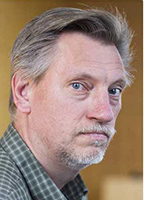 Dr. Karl Krushelnick received a B.Sc. in physics from the University of Western Ontario in London, Canada in 1987. He received an M.A. and Ph.D. from Princeton University in Astrophysical Sciences in 1989 and 1994, respectively. He was a postdoctoral researcher at Cornell University until 1997 when he moved to Imperial College London as a lecturer in the Physics Department. In 2003 he was promoted to full Professor and Head of the Plasma Physics Group there. In 2006 Krushelnick moved to the University of Michigan where he is presently Director of the Gerard Mourou Center for Ultrafast Optical Science (CUOS). His research is concentrated on experimental ultra-high intensity laser plasma interactions using the high power short pulse laser facilities at CUOS. This includes the development of “table-top” relativistic electron beams along with the development of compact proton/ion beams and x-ray/gamma ray beams. Professor Krushelnick is a Fellow of the American Physical Society and a Fellow of the Institute of Physics.
Dr. Karl Krushelnick received a B.Sc. in physics from the University of Western Ontario in London, Canada in 1987. He received an M.A. and Ph.D. from Princeton University in Astrophysical Sciences in 1989 and 1994, respectively. He was a postdoctoral researcher at Cornell University until 1997 when he moved to Imperial College London as a lecturer in the Physics Department. In 2003 he was promoted to full Professor and Head of the Plasma Physics Group there. In 2006 Krushelnick moved to the University of Michigan where he is presently Director of the Gerard Mourou Center for Ultrafast Optical Science (CUOS). His research is concentrated on experimental ultra-high intensity laser plasma interactions using the high power short pulse laser facilities at CUOS. This includes the development of “table-top” relativistic electron beams along with the development of compact proton/ion beams and x-ray/gamma ray beams. Professor Krushelnick is a Fellow of the American Physical Society and a Fellow of the Institute of Physics.
Abstract: Developments in high-power laser technology over the past decade have enabled the construction of several multiPetawatt laser systems around the world (https://eli-laser.eu, https://zeus.engin.umich.edu, https://corels.ibs.re.kr/html/corels_en/). These lasers are capable of extreme intensities approaching 10^23 W/cm^2 and are being used for a number of frontier experiments in plasma physics including; exploration of nonlinear QED processes as extremely intense laser pulses collide with GeV electron beams, experiments using femtosecond bursts of x-rays to probe dynamics on ultra-short timescales, the production of GeV ion beams, the generation of instabilities in electron-positron jets, the exploration of vacuum polarization effects, relativistic shocks, and the production of “exotic” particles such as pions and muons. However, one of the most powerful diagnostic tools for understanding these interactions remains the use of plasma spectroscopy. Consequently, I will discuss measurements of the plasma spectra generated from such extreme interactions and in particular discuss spectroscopic measurement techniques extending from the XUV (100eV) into the hard x-ray regime (>10 keV).
Sivanandan (Hari) S. Harilal
Pacific Northwest National Laboratory
“Characterization of Laser-Produced Plasmas using Optical Spectroscopy”
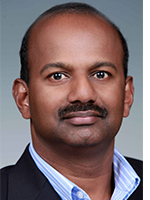 Dr. Hari Harilal is chief scientist at the DOE Pacific Northwest National Laboratory, Washington, USA. Hari has more than 20 years of experience in the fields of laser-plasma interaction, plasma-material interaction, plasma diagnostics, plasma chemistry, plasma and fireball spectroscopy (absorption, emission, fluorescence), plasma sources for lithography and microscopy, materials under extreme environment etc. Hari received the PhD degree in plasma physics from Cochin University of Science & Technology, India in 1998 and was an Alexander Humboldt fellow with the eminent plasma physicist Prof. Hans-Joachim Kunze at Ruhr University of Bochum, Germany during 1999-2001. Prior to joining PNNL in 2014, he worked as an associate professor at the School of Nuclear Engineering, Purdue University, IN (2008-2014) and was a member of the fusion group at the University of California San Diego, CA (2001-2007). He has authored over 180 peer-reviewed publications and 5 book chapters. He is a fellow of Optical Society of America, associate editor of Optics Letters and guest editor of IEEE Transactions on Plasma Science.
Dr. Hari Harilal is chief scientist at the DOE Pacific Northwest National Laboratory, Washington, USA. Hari has more than 20 years of experience in the fields of laser-plasma interaction, plasma-material interaction, plasma diagnostics, plasma chemistry, plasma and fireball spectroscopy (absorption, emission, fluorescence), plasma sources for lithography and microscopy, materials under extreme environment etc. Hari received the PhD degree in plasma physics from Cochin University of Science & Technology, India in 1998 and was an Alexander Humboldt fellow with the eminent plasma physicist Prof. Hans-Joachim Kunze at Ruhr University of Bochum, Germany during 1999-2001. Prior to joining PNNL in 2014, he worked as an associate professor at the School of Nuclear Engineering, Purdue University, IN (2008-2014) and was a member of the fusion group at the University of California San Diego, CA (2001-2007). He has authored over 180 peer-reviewed publications and 5 book chapters. He is a fellow of Optical Society of America, associate editor of Optics Letters and guest editor of IEEE Transactions on Plasma Science.
Abstract: Optical spectroscopy is one of the most established plasma diagnostic tools. The basics of optical spectroscopy include analyzing atomic and molecular line radiations, which can be used for diagnosing the laser-produced plasma (LPP) through the knowledge of plasma spectroscopy. Optical spectroscopic tools are broadly subdivided into passive and active. Emission spectroscopy - a passive method - uses spontaneously emitted light from atoms and molecules, typically excited by electrons. Absorption and fluorescence spectroscopy belong to the active sensing category, where an external light source is utilized for probing. In absorption spectroscopy, the amount of light transmitted (absorbed) is measured when the probe beam passes through the plasma. Fluorescence spectroscopy combines absorption and emission and monitors the change in spontaneous emission caused by the absorption of probe photons. There are both advantages and drawbacks to passive and active methods. Compared to absorption and fluorescence spectroscopy, emission spectroscopy is a standard diagnostic tool in the LPP community because of its experimental simplicity and non-intrusive nature. However, even though absorption and fluorescence spectroscopy can provide highly accurate results for the study of LPP fundamentals, they have seen only modest use for diagnosing LPPs. This could be due to the active nature of these techniques combined with more demanding experimental efforts. In this presentation, the experimental aspects, and the application of optical spectroscopy (emission, absorption, and laser-induced fluorescence) for the measurement of laser-produced plasma (LPP) physical properties such as temperature, density, kinetics, etc. will be discussed.
Jean-Pierre van Helden
Leibniz Institute for Plasma Science and Technology (INP)
“Infrared Laser Spectroscopy to Characterize Low and Atmospheric Pressure Plasmas”
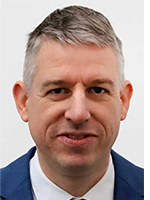 Dr. Ir. Jean-Pierre van Helden is with the Leibniz Institute for Plasma Science and Technology (INP) since 2012. He is the Head of Department Plasma Diagnostics at INP. He is also a lecturer for experimental physics at the University of Greifswald. He received his MSc degree in applied physics (Ir.) from the Eindhoven University of Technology in the Netherlands in 2001 and his PhD in 2006 from the same university. From 2007 until 2012, he was a postdoctoral research assistant at the Physical and Theoretical Chemistry Laboratory at the Department of Chemistry at the University of Oxford.
Dr. Ir. Jean-Pierre van Helden is with the Leibniz Institute for Plasma Science and Technology (INP) since 2012. He is the Head of Department Plasma Diagnostics at INP. He is also a lecturer for experimental physics at the University of Greifswald. He received his MSc degree in applied physics (Ir.) from the Eindhoven University of Technology in the Netherlands in 2001 and his PhD in 2006 from the same university. From 2007 until 2012, he was a postdoctoral research assistant at the Physical and Theoretical Chemistry Laboratory at the Department of Chemistry at the University of Oxford.
His current research interests are focused on the physico-chemical processes in low and atmospheric pressure plasmas. In particular, he is working on the development and application of laser-based diagnostics to characterise plasmas and their interactions with surfaces. Since a few years, the focus has been on highly sensitive laser-based diagnostics for plasmas using novel lasers in the mid- and far-infrared, including frequency comb spectroscopy and THz spectroscopy. He has published over 80 peer-reviewed articles and has given over 30 invited talks.
Abstract: Despite the ever-growing applications of low-temperature plasma physics and technology, a common problem to all subfields is that many plasma processes and properties are far from being completely understood, in particular, the physical and chemical interaction of plasmas with solids and liquids. It is therefore essential to diagnose the fluxes of the generated species, to identify the relevant reaction pathways, to be able to tailor the reaction products for specific applications, and to gain further insight into plasma-induced reactivity in condensed matter systems. This requires high precision measurements of reactive molecular precursors, free radicals and short-lived species. The typical low abundances of the key transient reactive species, nowadays often in combination with small plasma dimensions, make the detection of these species a challenge. To detect molecular species as well as atomic metastables, absorption spectroscopy has become a popular method for characterizing the fluxes of species in plasmas as it has several advantages over other optical diagnostic techniques. Moreover, molecular spectroscopy in the near- and mid-infrared regions is highly favourable because of the plethora of molecular fundamental, overtone and combination bands that can be accessed. As a result, selective and very sensitive spectroscopic measurements of a large number of compounds can be performed. I will discuss the basics and application of plasma spectroscopy in the infrared spectral region using various types of lasers. The sensitivity of laser spectroscopy can be enhanced by combining it with a high finesse optical cavity using cavity-enhanced spectroscopy techniques. I will discuss the application of cavity-enhanced spectroscopy to determine species concentrations in, e.g., atmospheric pressure plasma jets, where we achieved effective absorption path lengths of up to 100 meters in mm sized plasma jets. Hence, the application of cavity-enhanced spectroscopy leads to an increase of the sensitivity to detection limits of ppb down to ppt levels.
Oleksandr Marchuk
Institute of Energy and Climate Research (IEK-4)
“Plasma Spectroscopy of Magnetic Fusion Plasmas: From X-ray to Visible Light”
 Dr. Oleksandr Marchuk is a senior researcher at the Institute of Energy and Climate Research (IEK-4) of the Forschungszentrum Jülich (Germany) where he wrote his Ph.D. thesis on the modeling of x-ray spectra measured at the tokamaks TEXTOR and TORE SUPRA. The Ph.D was received at the Ruhr-University of Bochum (RUB) in 2004. In 2014, Dr. Marchuk successfully finalized his habilitation at RUB where he currently teaches a Master course on plasma spectroscopy. His research interests include both theoretical and experimental plasma physics with a special emphasis on x-ray emission, Zeeman and Stark effect, and high resolution spectroscopy at the plasma-surface interaction. He has produced seminal publications on the topics of emission of fast atoms in fusion plasma and the application of the density matrix formalism in the modeling of the Stark effect. He has supervised a number of Master and Ph.D. students on the topics of plasma surface interaction in a weakly magnetized plasmas. In a team of co-inventors he initiated a patent filing on Doppler-shifted Reflectance Measurements of surfaces, which has been granted in Germany, US, and China.
Dr. Oleksandr Marchuk is a senior researcher at the Institute of Energy and Climate Research (IEK-4) of the Forschungszentrum Jülich (Germany) where he wrote his Ph.D. thesis on the modeling of x-ray spectra measured at the tokamaks TEXTOR and TORE SUPRA. The Ph.D was received at the Ruhr-University of Bochum (RUB) in 2004. In 2014, Dr. Marchuk successfully finalized his habilitation at RUB where he currently teaches a Master course on plasma spectroscopy. His research interests include both theoretical and experimental plasma physics with a special emphasis on x-ray emission, Zeeman and Stark effect, and high resolution spectroscopy at the plasma-surface interaction. He has produced seminal publications on the topics of emission of fast atoms in fusion plasma and the application of the density matrix formalism in the modeling of the Stark effect. He has supervised a number of Master and Ph.D. students on the topics of plasma surface interaction in a weakly magnetized plasmas. In a team of co-inventors he initiated a patent filing on Doppler-shifted Reflectance Measurements of surfaces, which has been granted in Germany, US, and China.
Abstract: During the last decades, plasma spectroscopy has established itself as one of the most powerful techiques to obtain information on plasmas in fusion research. Fusion plasma spectroscopy covers the broad range of wavelengths from x-ray to visible light, with ability to perform both active and passive emission studies. Moreover, numerous principles of theoretical and experimental plasma spectroscopy (PLTE, light polarization, Zeeman and Stark effects) and atomic physics (dielectronic satellites, ionization equilibrium) are benchmarked and further developed in fusion plasmas [1] for elements from hydrogen to tungsten. Here, I concentrate only on the essential elements in the X-ray, XUV and visible ranges. Whereas X-ray emission is relevant for the core of magnetic fusion devices, such as ITER, spectroscopy in the visible range is performed for plasma-surface interaction studies. Finally, UV spectroscopy is applied mostly to study the behavior of impurities. A special case represents active plasma spectroscopy, associated with the injection of high energy neutral beams (CXRS, BES, etc.), and is performed throughout the plasma volume mostly in the UV and visible ranges. The theoretical aspects of spectroscopy in this lecture will be supported by examples from fusion devices for elements from hydrogen to tungsten.
[1] Neu R, Summers H P and Ralchenko Yu 2010 J. Phys. B 43 140201.
Steven Rehse
University of Windsor
“21st Century Medicine, One Spark at a Time: Biomedical Applications of Laser-Induced Breakdown Spectroscopy (LIBS)”
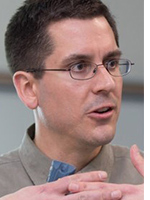 Dr. Steven J. Rehse is a Professor of Physics and is currently the Head of the Department of Physics at the University of Windsor in Windsor, Ontario, Canada. He received a B.S. in Physics from Michigan Technological University in 1994 and performed his undergraduate thesis work at Los Alamos National Laboratory in New Mexico where he performed experiments using laser-induced fluorescence (LIF) and laser-induced breakdown spectroscopy (LIBS) to monitor and analyze high temperature ablation in refractory carbide materials in support of the nuclear thermal rocket program. After spending a year and a half at Los Alamos, after graduation, working on the CALIOPE infrared LIDAR project, he attended Colorado State University in the Department of Physics where he received his M.Sc. and Ph.D. under the supervision of Dr. Siu Au Lee. His dissertation topic was the use of lasers to cool gallium atoms to allow their manipulation with resonant light-forces (cooling and trapping of atoms). After receiving his doctorate he was a post-doctoral fellow at the University of Western Ontario in London, Ontario, Canada from 2002-2005 before accepting an assistant professorship at Wayne State University in Detroit, Michigan. He was at Wayne State from 2005-2011 before relocating across the Detroit River to Windsor, where he was hired to lead a new undergraduate medical physics program. He has been at the University of Windsor since 2011 and conducts research into the use of the laser-based spectrochemical analysis technique known as “laser-induced breakdown spectroscopy,” particularly to analyze samples of medical interest, most specifically pathogenic bacteria.
Dr. Steven J. Rehse is a Professor of Physics and is currently the Head of the Department of Physics at the University of Windsor in Windsor, Ontario, Canada. He received a B.S. in Physics from Michigan Technological University in 1994 and performed his undergraduate thesis work at Los Alamos National Laboratory in New Mexico where he performed experiments using laser-induced fluorescence (LIF) and laser-induced breakdown spectroscopy (LIBS) to monitor and analyze high temperature ablation in refractory carbide materials in support of the nuclear thermal rocket program. After spending a year and a half at Los Alamos, after graduation, working on the CALIOPE infrared LIDAR project, he attended Colorado State University in the Department of Physics where he received his M.Sc. and Ph.D. under the supervision of Dr. Siu Au Lee. His dissertation topic was the use of lasers to cool gallium atoms to allow their manipulation with resonant light-forces (cooling and trapping of atoms). After receiving his doctorate he was a post-doctoral fellow at the University of Western Ontario in London, Ontario, Canada from 2002-2005 before accepting an assistant professorship at Wayne State University in Detroit, Michigan. He was at Wayne State from 2005-2011 before relocating across the Detroit River to Windsor, where he was hired to lead a new undergraduate medical physics program. He has been at the University of Windsor since 2011 and conducts research into the use of the laser-based spectrochemical analysis technique known as “laser-induced breakdown spectroscopy,” particularly to analyze samples of medical interest, most specifically pathogenic bacteria.
Abstract: With the coming of the COVID-19 pandemic, the world has become more aware than ever that medical technology needs to continually improve to provide faster, cheaper, and more accurate diagnostics, assays, and biopsies. Moreover, while scientific laboratory technologies continue to be developed at an unprecedented rate, their translation into the clinical pathology or microbiology lab has been slow. Yet the adoption of 21st Century technologies will be critical as we aim to improve access to healthcare, reduce overall costs, and improve patient outcomes. In the last decade, the use of a real-time elemental (atomic) analysis performed with laser-induced breakdown spectroscopy (LIBS) has made tremendous progress in becoming a viable technology for the rapid analysis and/or diagnosis of biomedical specimens. Applications include diagnosing bacterial pathogen infection, classification of hard tissues such as dental caries and gallstones, analysis of soft tissues for mapping of elemental distribution and discrimination between malignant and benign tissue, and real-time analysis of laser scalpel ablation to identify the tissue being removed during the procedure. In this talk I will introduce the technique of LIBS and present its advantages and disadvantages compared to other competing elemental analysis techniques. I will give an overview of the most commonly used experimental apparatus that has made the technique both widely available and robust enough to be included in the last two Mars rovers. I will give a brief overview of the different biomedical applications to which LIBS has been applied and I will show how this laser-based optical emission spectroscopic technique is able to sensitively assay the elemental composition of bacterial cells and other tissues in vitro and in vivo. The ultimate goal of this talk will be to understand the use of LIBS and how it could be used as a new and important tool in the medical pathology laboratory, microbiology laboratory, or clinic of the future.
David Ball
Cleveland State University, Retired
“Spectroscopy: A Chemist’s Overview”
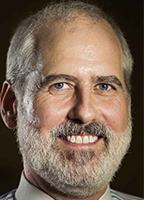 Dr. David W. Ball was a professor of chemistry at Cleveland State University for over 30 years. He received his B.S. in chemistry from Baylor University and his Ph.D. in chemistry from Rice University. After two years of post-doctoral research at Lawrence Berkeley National Laboratory, he joined the faculty at Cleveland State University, rising to the rank of professor. His research interests included low-temperature infrared spectroscopy, which was later supplemented with computational chemistry. He also has a keen interest in science education. He has over 230 publications, including 12 books, one Great Course, and was a columnist for Spectroscopy magazine for 19 years. He is active in the American Chemical Society, serving as chair of the Cleveland Section three times and participating in several national-level committees, including three ACS Standardized Exam Committees. He retired from his university position at the end of 2020.
Dr. David W. Ball was a professor of chemistry at Cleveland State University for over 30 years. He received his B.S. in chemistry from Baylor University and his Ph.D. in chemistry from Rice University. After two years of post-doctoral research at Lawrence Berkeley National Laboratory, he joined the faculty at Cleveland State University, rising to the rank of professor. His research interests included low-temperature infrared spectroscopy, which was later supplemented with computational chemistry. He also has a keen interest in science education. He has over 230 publications, including 12 books, one Great Course, and was a columnist for Spectroscopy magazine for 19 years. He is active in the American Chemical Society, serving as chair of the Cleveland Section three times and participating in several national-level committees, including three ACS Standardized Exam Committees. He retired from his university position at the end of 2020.
Abstract: A startling amount of the information we know about the universe is delivered to us by light. However, the formal science of studying the universe using electromagnetic radiation, called spectroscopy, is only about 160 years old. This presentation will introduce spectroscopy as a research topic from the perspective of the chemical scientist. It will give a little bit of history, a discussion of the entire electromagnetic spectrum, and some of the ways chemists manipulate light to study matter. The intention is to give a brief, but broad, overview of spectroscopy as a starting point for further discussions into plasma spectroscopy and its use as a method to study not only plasma phenomena itself, but matter in all of its physical states.
